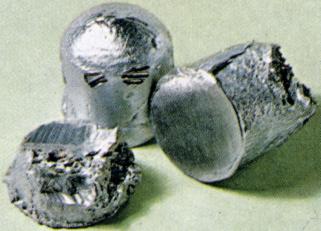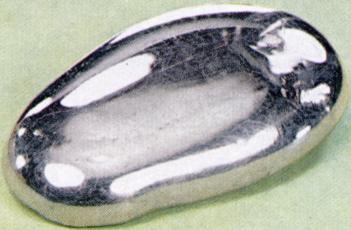| Subject |
has pronunciation |
has space group |
has thermal neutron capture cross section |
has rigidity modulu |
has synonym |
has isotope mass range |
has heat of vaporization |
has discoverer |
has thermal conductivity |
has discovery date |
has name origin |
has linear expansion coefficient |
has heat of fusion |
has specimen |
has main mining area |
has critical pressure |
has daily dietary intake |
has lethal intake |
has ocean residence time |
has mineral |
has melting point |
has neutron scattering length |
has image |
has ocean concentration |
has covalent radii |
has term symbol |
has crystal cell dimension |
has mass of element in person |
has poisson's ratio |
has reserve |
has ocean oxidation state |
is a kind of |
has young's modulu |
has heat capacity |
has bulk modulu |
has van der Waals radii |
has molar volume |
has definition |
has boiling point |
has hazard |
has biological role |
has ionic radii |
has electrical resistivity |
has relative atomic mass |
has chief source |
has electron affinity |
has density |
has registry number |
has atomic radii |
has atomic number |
has mass magnetic susceptibility |
has discovery location |
has number of isotope |
has toxic intake |
has abundance |
has atomic emission line |
reacts with |
has longest lived isotope |
has symbol |
has use |
has crystal type |
has world production |
has electron configuration |
has number of proton |
has mass absorption coefficient |
has level in human |
has electronegativity |
has critical temperature |
has group |
|---|
| cadmium | | | | | atom | | | | | | | | | | | | | | 30 years | | | |  | increasing with depth | | | | | | | II | recycled oceanic element | | | | | | | | | | | | | | | | | | | | | | | | | | | | | | | | | | | | | a column number in the table of the elements |
| chromium | kroh-mi-uhm | Im3m | 3.1 barns | 115.3 GPa | atom | 45 to 57 | 348.78 kJ mol-1 | Nicholas Louis Vauquelin | 93.7 W m-1 K-1 at 300 K | 1780 | chroma = colour from Greek | 6.2 × 10-6 K-1 | 15.3 kJ mol-1 | chips, chunks, crystallites or powder. Safe. | Turkey, South Africa, Zimbabwe, Russia, Philipipines | | 0.01 - 1.2 mg | 70 mg kg-1 metal taken oraly in humans | 10000 years | chromite, crocoite | 2130 ± 20 K | 0.3635 × 10-12 cm |  | increasing with depth | | 7S3 in ground state | a = 288.46 pm | 14 mg for a 70 kg average person | 0.21 GPa | 1 × 109 tonnes | VI | recycled oceanic element | 279 GPa | 20.79 J K-1 mol-1 for gas at constant pressure 0.1 MPa at 298.15 K | 160.2 GPa | | 7.23 cm3 | hard, blue-white metal which resists oxidation in air, can be polished to a high shine | 2945 K | poison by ingestion, suspected carcinogen, chromates are corrosive to tissue | essential to some species, including humans, stimulates metabolism | 84 pm for Cr2+ | 12.7 × 10-8 Ω m at 293 K | 51.9961 in units of 12C = 12.000 | chromite | 64.3 kJ mol-1 from Cr to Cr- | 6460 kg m-3 for liquid at 2130 K melting point | 7440-47-3 for Chemical Abstracts System database | 125 pm | 24 | +4.45 × 10-8 kg-1 m3 for solid | Paris, France | 13 including nuclear isomers | 200 mg | 2.5 × 10-4 p.p.m. in deep Pacific seawater | 520.844 nm for Cr I | HCL and H2SO4 by disolving | chromium 52 | Cr | alloys, plating and metal ceramics | b.c.c. | 9.6 × 106 tonnes year-1 for chromite ore | [Ar]3d54s1 in ground state | 24 | 31.1 cm2 g-1 for MoKalpha X-ray diffraction | 0.024 - 0.84 p.p.m. in muscle | 1.66 Pauling | | a column number in the table of the elements |
| manganese | man-gan-eez | I-43m for α-Mn | 13.3 barns | 79.5 GPa | atom | 49 to 62 | 219.7 kJ mol-1 | J.G. Gahn | 7.82 W m-1 K-1 at 300 K | 1774 (isolated) | magnes = magnet from Latin or magnesia nigri = black magnesia (MnO2) | 22 × 10-6 K-1 | 14.4 kJ mol-1 | chips, flake or powder. Safe. | South Africa, Russia, Gabon, Australia, Brazil | | 0.4 - 10 mg | 1715 mg kg-1 for chloride in mouse | 50 years | bixbyite, managanite, pyrolusite, rhodochrosite, rhodonite (jewelry), romanechite | 1517 K | -0.373 × 10-12 cm |  | decreasing with depth | 117 pm | 6S5/2 in ground state | a = 891.39 pm for α-Mn | 12 mg for a 70 kg average person | 0.24 GPa | 3.6 × 109 tonnes (plus ocean floor nodules which are 24% Mn) | II | scavenged oceanic element | 191 GPa | 20.79 J K-1 mol-1 for gas at constant pressure 0.1 MPa at 298.15 K | n.a. GPa | | 7.38 cm3 | hard, brittle, silvery metal | 2235 K | compounds are experimental carcinogens and teratogens | essential to all species | 91 pm for Mn2+ | 185.0 × 10-8 Ω m at 298 K | 54.93805 in units of 12C = 12.000 | pyrolusite, romanechite (also known as psilomelane), manganite (useful but rare) | less than 0 kJ mol-1 from Mn to Mn- | 6430 kg m-3 for liquid at 2235 K melting point | 7439-96-5 for Chemical Abstracts System database | 124 pm | 25 | +1.21 × 10-7 kg-1 m3 for solid | Stockholm, Sweden | 15 including nuclear isomers | slighly toxic by ingestion | 0.4 × 10-4 p.p.m. in deep Pacific seawater | 403.449 nm for Mn I | dilute acids by dissolving | manganese 55 | Mn | steel production, ceramics, feed supplements and fertilizer additives | b.c.c. for α-Mn | 6.22 × 106 tonnes year-1 | [Ar]3d54s2 in ground state | 25 | 34.7 cm2 g-1 for MoKalpha X-ray diffraction | 0.2 - 2.3 p.p.m. in muscle | 1.55 Pauling | | a column number in the table of the elements |
| selenium | | | | | chalcogen | | | | | | | | | | | | | | 3000 years | | | |  | increasing with depth | | | | | | | VI some IV | recycled oceanic element | | | | | | | | | | | | | | | | | | | | | | | | | | | | | | | | | | | | | 16 |
| silver | | | | | atom | | | | | | | | | | | | | | 5000 years | | | |  | increasing with depth | | | | | | | I | recycled oceanic element | | | | | | | | | | | | | | | | | | | | | | | | | | | | | | | | | | | | | a column number in the table of the elements |
| sulfur | sul-fer | Fddd for α form | 0.53 barns | | chalcogen | 29 to 39 | 9.62 kJ mol-1 | | 0.269 W m-1 K-1 for α at 300 K | prehistoric | sulvere = sulfur from Sanskrit (sulphurium from Latin) | 74.33 × 10-6 K-1 | 1.23 kJ mol-1 | powder and flakes. Safe. | USA (native sulfur), Spain | 20700 kPa | 850 - 930 mg | 175 mg kg-1 for rabbits | 8 × 106 years | occurs naturally as native sulfur deposits associated with oil-bearing strata | 386.0 K for α form | 0.2847 × 10-12 cm |  | depth indenpendent | 104 pm | 3P2 in ground state | a = 1046.46, b = 1286.60, c = 2448.60 pm for α form | 140 g for a 70 kg average person | | 2.5 × 109 tonnes | VI | accumulating oceanic element | | 23.673 J K-1 mol-1 for gas at constant pressure 0.1 MPa at 298.15 K | | 185 pm | 15.49 cm3 | the α-S8 orthorhombic form of sulfur is yellow | 717.824 K | elemental form is harmless unless ingested; ignited it emits highly toxic SO2 fumes | essential to all living things; part of the amino acids methionine and cysteine | 184 pm for S2- | 2 × 1015 Ω m at 293 K | 32.066 in units of 12C = 12.000 | native sulfur, pyrite, H2S in natural gas | 200.4 kJ mol-1 from S to S- | 1819 kg m-3 for liquid at 393 K | 7704-34-9 for Chemical Abstracts System database | 104 pm | | -5.83 × 10-9 kg-1 m3 for β solid | | 11 including nuclear isomers | elemental form is not very toxic, but simple derivatives are (SO2, H2S, etc.) | 870 p.p.m. in seawater | 964.99 nm for S I | oxidising acids | sulfur 32 | S | key industrial chemical, starting point for sulfuric acid | orthorhombic for α form | 54 × 106 | [Ne]3s23p4 in ground state | 16 | 9.55 cm2 g-1 for MoKα X-ray diffraction | 5000 - 11000 p.p.m. in muscle | 2.58 Pauling | 1314 K | 16 |
| zinc | | | | | atom | | | | | | | | | | | | | | 5000 years | | | |  | increasing with depth | | | | | | | II | recycled oceanic element | | | | | | | | | | | | | | | | | | | | | | | | | | | | | | | | | | | | | a column number in the table of the elements |
 Astronomy View all facts Glossary Help
Astronomy View all facts Glossary Help Astronomy View all facts Glossary Help
Astronomy View all facts Glossary Help






 Next planetary element: lithophile element Up: planetary element Previous planetary element: atmophile element
Next planetary element: lithophile element Up: planetary element Previous planetary element: atmophile element